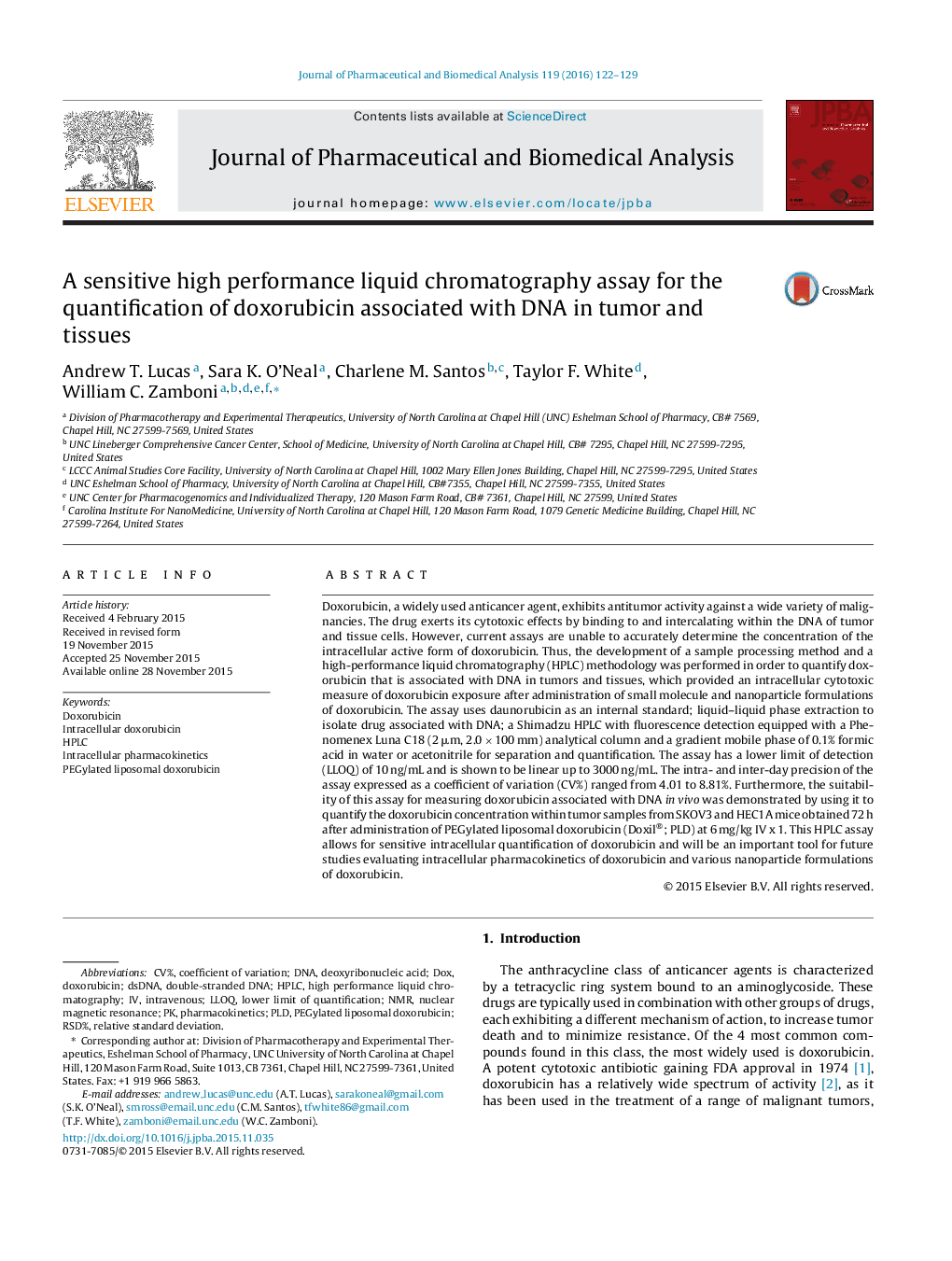| Article ID | Journal | Published Year | Pages | File Type |
|---|---|---|---|---|
| 1221067 | Journal of Pharmaceutical and Biomedical Analysis | 2016 | 8 Pages |
•A HPLC method was validated to quantify doxorubicin associated to DNA from tissue.•Successfully applied to an in vivo mouse-based pharmacokinetic study.•Important tool for future studies evaluating intracellular pharmacokinetics.
Doxorubicin, a widely used anticancer agent, exhibits antitumor activity against a wide variety of malignancies. The drug exerts its cytotoxic effects by binding to and intercalating within the DNA of tumor and tissue cells. However, current assays are unable to accurately determine the concentration of the intracellular active form of doxorubicin. Thus, the development of a sample processing method and a high-performance liquid chromatography (HPLC) methodology was performed in order to quantify doxorubicin that is associated with DNA in tumors and tissues, which provided an intracellular cytotoxic measure of doxorubicin exposure after administration of small molecule and nanoparticle formulations of doxorubicin. The assay uses daunorubicin as an internal standard; liquid–liquid phase extraction to isolate drug associated with DNA; a Shimadzu HPLC with fluorescence detection equipped with a Phenomenex Luna C18 (2 μm, 2.0 × 100 mm) analytical column and a gradient mobile phase of 0.1% formic acid in water or acetonitrile for separation and quantification. The assay has a lower limit of detection (LLOQ) of 10 ng/mL and is shown to be linear up to 3000 ng/mL. The intra- and inter-day precision of the assay expressed as a coefficient of variation (CV%) ranged from 4.01 to 8.81%. Furthermore, the suitability of this assay for measuring doxorubicin associated with DNA in vivo was demonstrated by using it to quantify the doxorubicin concentration within tumor samples from SKOV3 and HEC1A mice obtained 72 h after administration of PEGylated liposomal doxorubicin (Doxil®; PLD) at 6 mg/kg IV x 1. This HPLC assay allows for sensitive intracellular quantification of doxorubicin and will be an important tool for future studies evaluating intracellular pharmacokinetics of doxorubicin and various nanoparticle formulations of doxorubicin.
Graphical abstractFigure optionsDownload full-size imageDownload as PowerPoint slide
